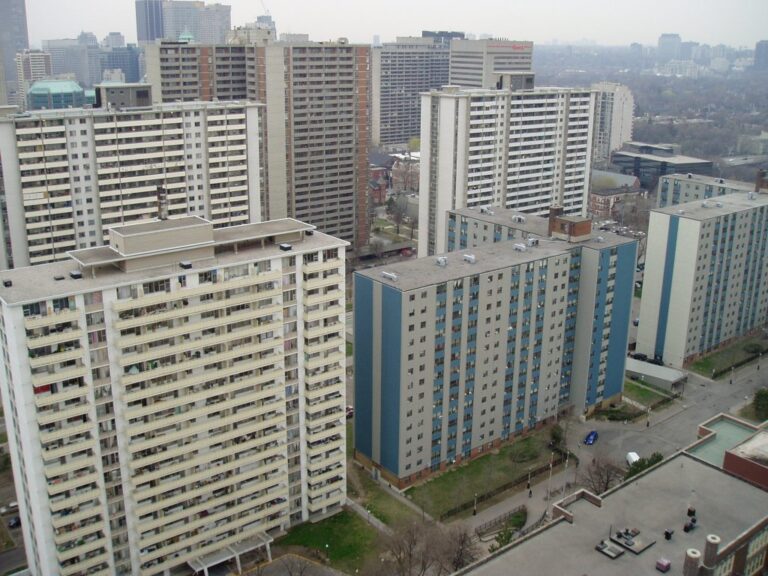Physical Address
304 North Cardinal St.
Dorchester Center, MA 02124
Physical Address
304 North Cardinal St.
Dorchester Center, MA 02124
A common argument against Airbnb and similar home-sharing companies is that they raise rents, because every apartment used for short-term rentals could be used for long-term rentals. A recent paper by a Spanish Ph.D. candidate suggests otherwise. The paper focused on Santa Monica, California where, in 2015, the city adopted an ordinance restricting home-sharing. This city’s ordinance was successful in reducing Airbnb listings- especially listings of complete apartments, which cities are most likely to regulate (as opposed to spare rooms in a residence used by an Airbnb host). If the anti-home sharing argument was valid, rents should have gone down. Instead, rents rose in Santa Monica by the same amount as they rose in other Los Angeles suburbs that do not regulate home-sharing to the same extent.

Five years ago everything in California felt like a giant (land use policy) dumpster fire. Fast forward to today we live in a completely different world. Yimby activists have pushed policy, swayed elections, and dramatically shifted the overton window on California housing policy. And through this process of pushing change, Yimbyism itself has evolved as well. Learning by Listening Yimbys started out with a straightforward diagnosis of the housing crisis in California. They said, “…housing prices are high because there’s not enough housing and if we want lower prices, we need more housing”. And they were, of course, completely right…at least with regards to the specific problem-space defined by supply, demand, and the long run. As Yimby’s started coalition building, though, they began recognizing related, but fundamentally different concerns. For anti-displacement activists, the problem was not defined by long-run aggregate prices. It was instead all about the immediate plight of economically vulnerable communities. Increasing supply was not an attractive proposal because of the long time horizons (years, decades) and ambiguous benefit for their specific constituencies. Yimbyism as Practical Politics Leaders in the Yimby movement could have thrown up their hands and walked away. But they didn’t. Instead they listened and developed a yes and approach. The Yimby platform still embraces the idea that, long run, we need to build more housing, but it now also supports measures to protect those who’ll fall off the housing ladder tomorrow without a helping hand today. Scott Weiner’s SB50 is a great example of this attitude in action. If passed, the bill will reduce restrictions on housing construction across the state. It targets transit and job rich areas and builds in eviction protections to guard against displacement. At a high level, it sets up the playing field so that renters in a four story […]

Believe it or not, the YIMBY movement won a lot in 2018. It kicked off with January’s high of California State Senator Scott Wiener’s introduction of SB 827, which would have permitted multifamily development near transit across the state, but fell to a low after its eventual defeat in committee, invariably followed by a flurry of think pieces about how the pro-development movement had “failed.” At the time, I made the case for optimism over on Citylab, but that didn’t stop the summer lull from becoming a period of soul searching within the movement. And then, a strange thing happened: YIMBYs started winning, and winning big. In August, presidential-hopeful Senator Cory Booker released a plan to preempt exclusionary zoning using Community Development Block Grant funds, quickly followed by a similar plan from Senator Elizabeth Warren in September. Also in August, Housing and Urban Development Secretary Ben Carson unexpectedly outed himself as a YIMBY. Then, in December, things really got crazy: two major North American cities, Minneapolis and Edmonton, completely eliminated single-family zoning. States like Oregon soon started talking about doing the same. In the same month, California kicked into overdrive: San Francisco—ground zero for the YIMBY movement—scrapped minimum parking requirements altogether. State Senator Wiener introduced a newer, sharper version of SB 827. And rolling into 2019, elected officials at every level of California government—from the state’s new Democratic governor to San Diego’s Republican mayor—are singing from the YIMBY hymn sheet. All in all, it wasn’t a bad year for a movement that’s only five years old. But what really made 2018 such an unexpected success for YIMBYs? Focus on Citywide Reform Over Individual Rezonings Showing up and saying “Yes!” to individual projects that are requesting a rezoning, variance, or special permit is bread-and-butter YIMBY activism. And while YIMBYs should still […]
One reason for California’s high housing costs might be Proposition 13. This law, passed by referendum in the 1970s, may discourage housing production in two significant ways. First, under Proposition 13, all housing- even vacant land- is taxed at its original purchase price rather than its current value. By artificially capping taxes on vacant land, this part of Proposition 13 ensures that a landowner does not suffer as much from keeping land vacant as it would under another tax system. Second, by reducing local property taxes, Proposition 13 forced municipalities to rely on other sources of revenue, such as sales taxes. Because retail shops bring in more sales tax revenue than residential uses, this law gave California towns an incentive to favor the former. * New York’s Gov. Cuomo has recently proposed a tax cut that buys popularity for state lawmakers on the backs of municipalities. In 2011, the state passed a law to limit local governments’ property tax increases to 2 percent or the rate of inflation, whichever is lower. This cap was originally temporary, but Cuomo now proposes to make it permanent. A bill implementing Cuomo’s proposal was recently passed by the State Senate, but has yet to be voted on by the State Assembly. Historically, the cap has not included high-cost New York City, but that may change. If the cap does include New York City, will it have the same results as Proposition 13? Probably not, for two reasons. First, the tax cap, unlike Proposition 13, does not artificially favor property purchased long ago, and thus does not discourage people from selling their property. Second, New York State has to consent to sales tax increases, so municipalities don’t have as much of an incentive as their California counterparts to favor land uses that bring in lots […]
This book is an attack on current city planning and rebuilding. This is how Jane Jacobs opened her 1961 classic “The Death and Life of Great American Cities”. It wouldn’t be an inappropriate opener for Alain Bertaud’s upcoming “Order Without Design”. While Jacobs was an observer of how cities work and a contributor to new concepts in urban economics, Bertaud goes a step further. His book brings economic logic and quantitative analysis to guide urban planning decision-making, colored by a hands-on, 55-year career as a global urban planner. His conclusion? The urban planning practice is oblivious to the economic effects of their decisions, and eventually creates unintended consequences to urban development. His goal with this book is to bring economics as an important tool to the urban planning profession, and to bring economists closer to the practical challenge of working with cities. Maybe you have not heard about Alain Bertaud before: at the time I am writing this article, he has only a few articles published online, no Wikipedia page or Twitter account, and some lectures on YouTube – and nothing close to a TED talk. The reason is that instead of working on becoming a public figure, Bertaud was actually doing work on the ground, helping cities in all continents tackle their urban development problems. His tremendous experience makes this book that delves into urban economics surprisingly exhilarating. As an example, Bertaud shows a 1970 photo from when he was tracing new streets in Yemen using a Land Rover and the help of two local assistants who look 12 years old at most, a depiction of a real-life Indiana Jones of urban planning. In this book, mainstream urban planning “buzzwords” such as Transit-Oriented Development, Inclusionary Zoning, Smart Growth and Urban Growth Boundaries are challenged with economic analysis, grounded on […]

In Generation Priced Out, housing activist Randy Shaw writes a book about the rent crisis for non-experts. Shaw’s point of view is that of a left-wing YIMBY: that is, he favors allowing lots of new market-rate housing, but also favors a variety of less market-oriented policies to prevent displacement of low-income renters (such as rent control, and more generally policies that make it difficult to evict tenants). What I liked most about this breezy, easy-to-read book is that it rebuts a wide variety of anti-housing arguments. For example, NIMBYs sometimes argue that new housing displaces affordable older housing. But Shaw shows that NIMBY homeowners oppose apartment buildings even when this is not the case; apartments built on parking lots and vacant lots are often controversial. For example, in Venice, California, NIMBYs opposed “building 136 supportive housing units for low-income people on an unsightly city-owned parking lot.” NIMBYs may argue that new housing will always be for the rich. But Shaw cites numerous examples of NIMBYs opposing public housing for the poor as well as market-rate housing for the middle and upper classes. NIMBYs also claim that they seek to protect their communities should be protected against skyscrapers or other unusually large buildings. But Shaw shows that NIMBYs have fought even the smallest apartment buildings. For example, in Berkeley, NIMBYs persuaded the city to reject a developer’s plan to add only three houses to a lot. On the other hand, market urbanists may disagree with Shaw’s advocacy of a wide variety of policies that he refers to as “tenant protections” such as rent control, inclusionary zoning, increased code enforcement, and generally making it difficult to evict tenants. All of these policies make it more difficult and/or expensive to be a landlord, thus creating costs that may either be passed on to tenants […]

One alternative to market urbanism that has received a decent amount of press coverage is the PHIMBY (Public Housing In My Back Yard) movement. PHIMBYs (or at least the most extreme PHIMBYs) believe that market-rate housing fails to reduce housing costs and may even lead to gentrification and displacement. Their alternative is to build massive amounts of public housing. On the positive side, PHIMBYism, if implemented, would increase the housing supply and lower housing costs, especially for the poor who would be served by new public housing. And because there is certainly ample consumer demand for new housing, PHIMBYism would be more responsive to consumer preferences than the zoning status quo (which privileges the interests of owners of existing homes over those of renters and would-be future homeowners). But PHIMBYism is even more politically impossible than market urbanism. Market urbanists just want to eliminate zoning codes that prevent new housing from being built- a heavy lift in the political environment of recent decades. But PHIMBYs want to override the same zoning codes, AND find the land for new public housing (which often will require liberal use of eminent domain by local governments), AND find the taxpayer money to build that new public housing, AND find the taxpayer money to maintain that housing forever. And to make matters worse, the old leftist remedy of raising taxes on the rich might be inadequate to fund enough housing, because the same progressives who are willing to spend more money on housing also want to spend more public money on a wide variety of other priorities, thus making it difficult to find the money for housing.
One common argument against all forms of infill development runs something like this: “In dense, urban areas land prices are always high, so housing prices will never be affordable absent government subsidy or extremely low demand. Furthermore, laws that allow new housing will make land prices even higher, thus making housing more unaffordable.” This argument seems to be based on the assumption that land prices are essentially a fixed cost: that is to say, that they can only go up, never go down. In fact, land costs are extremely volatile. For example, a recent Philadelphia Inquirer story showed that in Philadelphia, land costs per square foot of vacant land fell by 46 percent over the last year. Why? A developer quoted in the story suggests that as supply has started to keep up with demand, rents have declined, causing land prices to decline. In other words, when supply increases, rents go down AND so do land prices.
Scott Alexander, a West Coast blogger, has written a post that has received a lot of buzz, called “Steelmanning the NIMBYs”; apparently, “steelmanning” is the opposite of “straw manning”; that is, it involves making the best possible case for an argument you don’t really support. There have been so many comments to this post that I don’t feel the need to respond to every point (and many of the points are very San Francisco-specific). But here are a few points, each of which begin with a quote from Alexander: “Even in the best case scenario, increased housing supply will just make apartments slightly more affordable.” But the post states that if housing supply increases by the admittedly ambitious 2.5 percent a year, the monthly rent for a one bedroom San Francisco apartment will go down from $3500 to $2100- a forty percent decrease. Moreover, in looking at the effects of new supply it isn’t enough to compare the benefits of reform to the status quo, because it is quite possible that if we continue “business as usual” policies rents will keep rising. So instead of comparing $2100 to the current rent, maybe we should compare it to whatever the rent will be if San Francisco continues along its current path (which I am guessing is more than $3500). “If your theory predicts that turning a city into Manhattan will make rents plummet, then consider that turning Manhattan into Manhattan made rents much worse, and so maybe your theory is wrong.” This is another version of the theory that density causes rent to rise. I have responded to that argument here. (Brief summary: Manhattan has gotten LESS dense over time, so if density was bad for rent, Manhattan should be a bargain now!) “And I have heard YIMBYs counter that if people don’t want […]

Earlier this year, researchers Paavo Monkkonen and Michael Manville at the University of California Los Angeles (UCLA) conducted a survey of 1,300 residents of Los Angeles County to understand the motives behind NIMBYism. As part of the study, they presented respondents with three common anti-development arguments, including the risk of traffic congestion, changes to neighborhood character, and the strain on public services that new developments may bring. But according to their findings, the single most powerful argument motivating opposition to new development was the idea that a developer would make a profit off of the project. At first blush, this finding might seem kind of obvious. People really don’t like developers. As Mark Hogan observed last year on Citylab, classic films from “It’s a Wonderful Life” to “The Goonies” depict developers as money-grubbing villains. But, when you think about it, it’s pretty weird that this is the case. In what other contexts do we actively dislike people who provide essential services, even if they happen to turn a profit? I don’t begrudge the owner of the corner grocery every time I buy a loaf of bread or a gallon of milk, and I hope you don’t either. In fact, most of us are probably happy that folks like doctors and dentists earn a lot for what they do. So why are developers, who provide shelter, any different? One possibility is that developers are often, for lack of a better term, assholes. This is surely the case with at least some developers. Our president is arguably America’s most famous developer, even if he isn’t exactly the master builder he played on television. And President Trump’s defining characteristic in his “Celebrity Apprentice” role—and evidently in real life—is that he is a bit of an asshole. But it isn’t just him. Most cities have […]